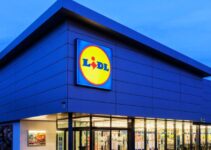Kraft Heinz is a food and beverage manufacturing American multinational company. The merger of HJ Heinz and Kraft Food laid the foundation of the food and beverage company Kraft Heinz. Today, we’ll discuss the value chain analysis of Kraft Heinz supply chain analysis; primary and supporting activities in the process of value chain analysis Example Company. They are inbound and outbound logistics, operations, marketing, and customer service; infrastructure, HRM, technology, and procurement as an application of the value chain analysis process.
Raw Materials and Supplies Required for Production to Kraft Heinz
- Wheat and rice
- Corn product
- Sugar and sweetener
- Vegetable oil and soybean
- Potatoes
- Tomatoes
- Nuts
- Beans Coffees
- Meat
- Dairy products
- Cardboard
- Resins
- Corrugated paper
The Value chain analysis of Kraft Heinz supply chain analysis would analyze the primary and supporting activities in the process of value chain analysis. They’re inbound and outbound logistics, operations, marketing, and services; infrastructure, HRM, technology, and procurement. Here’s supply chain analysis of Kraft Heinz value chain analysis company example as follows;
Value Chain Analysis of Kraft Heinz
Let’s discuss the primary and supporting activities involved in the process of value chain analysis of Kraft Heinz supply chain analysis. It is an application of value chain analysis based on Porter’s model; some of the key elements and components of value chain analysis are as follows;
Primary Activities of Kraft Heinz
Some of the five main primary activities in the value chain analysis of Kraft Heinz supply chain analysis are as follows;
Inbound Logistics of Kraft Heinz
I-Large Suppliers Network
Kraft Heinz has established a very large network of suppliers comprises of over 5550 suppliers in over 40 countries across the world. The food and beverage company deals with a very large and diverse range of suppliers, vendors, and farmers. It helps the company to ensure the smooth supply of materials, goods, and supplies to ensure the smooth supply.
II-Suppliers Code of Conduct
In order to regulate suppliers and ensure high-quality material, Kraft Heinz has developed a strict code of conduct and regulations for suppliers and vendors. Some of the main areas of the company’s suppliers’ regulations are as follows;
- Auditing and monitoring their performance
- Conducting training for suppliers
- Animal welfare
- Environmental sustainability
- Lower Greenhouse gas emission
- Supplier diversity protocols
- Building and maintaining a safe and healthy workplace environment
- Complying with labor practices and human rights standards
- Not engaging in corrupt practices
III-Commitment to Sustainability
Kraft Heinz has made a strong commitment to ESG (environmental social governance) strategies and practices. In fact, the company has added them to its long-term business strategy. The food brand focuses on sustainable sourcing of ingredients from diverse suppliers worldwide.
- Healthy lifestyle living and supporting the community
- Environmental sustainability towards zero-carbon emission rate
- Ethical and responsible sourcing of raw materials and supplies
Outbound Logistics of Kraft Heinz
I-Logistics Partners
Kraft Heinz collaborates and partners up with various 3rd party logistics service providers and delivery service-providing transporters. They deliver raw supplies and materials to the manufacturers, and production facilities; and finished goods to the retail stores, supermarkets, hotels, hospitals, and ultimately the end consumers.
II-Electric Truck Fleet
Kraft Heinz is building an electric truck fleet to streamline its green and sustainable initiative of decreasing the carbon emission rate. The objective of the food and beverage brand is to reduce and eliminate diesel trucks from its distribution centers and transportation channel mode. However, it allows the company to increase productivity and saves cost and capital resources.
Operations of Kraft Heinz
I-Manufacturing and Production Facilities
Kraft Heinz has a network of roundabout 79 manufacturing facilities and 210 external outsourcing manufacturing units in over 40 countries across the world. The global network of production and manufacturing facilities would help the company to ensure the timely availability of finished products to the end consumers.
II-Distribution Centers and Warehouses
Kraft Heinz has built warehouses and distribution centers in various countries across the world. They receive finished goods from the production and manufacturing facilities; temporarily store and organize the food and beverages; and then ship them to the required destination of retail stores, supermarkets, and any other retail outlet. However, the largest distribution center is in North America with a size of 775000 square feet with state-of-the-art technology.
Marketing & Sales of Kraft Heinz
I-Responsible Marketing and Advertisement
Kraft Heinz employs multiple media channels for marketing and advertisement of its food and beverages and brand promotion. While launching marketing campaigns, the food brand has a strong commitment to responsible marketing and advertisement; it comprises of following code of conduct;
- Not marketing in the schools
- Strictly guiding media channels not to target advertisements to children
- Only marketing the certified nutrition products to children aged 6 to 12
- Not advertising to children under the age of 6
Kraft Heinz is fully complying with the rules and regulations of following;
- CARU (children’s advertising review unit)
- COPPA (Children Online Privacy Protection Act)
- CFBAI (children’s food and beverage advertising initiative)
Services of Kraft Heinz
Kraft Heinz offers a wide range of products and services under different brand names to customers. The objective is to provide high-quality food and beverages with unique tastes. However, some of the major products, services, and brands that are operating under Kraft Heinz are as follows;
- Oreo
- Nabisco
- Milka
- Maxwell House
- LU
- Kraft Mayo
- Single Kraft
- Jacobs
- Cadbury
Supporting Activities of Kraft Heinz
Some of the main supporting activities in the value chain analysis of Kraft Heinz supply chain analysis are as follows;
Infrastructure of Kraft Heinz
Kraft Heinz has established a very large infrastructure of production and manufacturing facilities, distribution centers, warehouses, logistic fleet size, and suppliers’ network. It helps the company to ensure the smooth supply and availability of raw material to the manufacturing units; and finished goods at the retail store for the end consumers.
HRM of Kraft Heinz
Kraft Heinz has employed over 36000 employees to manage its global operations. The human resource management department of the company plays a key role in building a healthy, professional, and diverse working environment; offering equal employment opportunities without any differences; and complying with legal and human rights standards.
Technological Development of Kraft Heinz
Kraft Heinz invests a significant amount of capital resources in technological development and implementing the latest technology in its production facilities. It is in the form of automated processes, the latest tools and equipment, electric trucks, and other resources. However, they help the company to ensure the smooth supply of raw materials and supplies to the end consumers.
Procurement of Kraft Heinz
Kraft Heinz is highly careful and cautious about ethical sourcing and procurement of raw materials and supplies for the production of food and beverages. In fact, the food brand had developed strict standards for suppliers to comply with in order to keep working with the brand. Otherwise, the company would break and terminate the contract.
Conclusion: Kraft Heinz Value Chain Analysis Example Company | Application of Value Chain Analysis Process
After an in-depth study of the value chain analysis of Kraft Heinz; we have realized that Kraft Heinz is the world’s leading food and beverage multinational company. If you are learning about the Kraft Heinz value chain analysis example company; then you should keep in mind the abovementioned primary and supporting activities. They’re inbound and outbound logistics; operations, marketing and sales, and services; infrastructure, procurement, HRM, and technological development as an application of the value chain analysis process.
Ahsan is an accomplished researcher and has a deep insight in worldly life affairs. He goes Live 3 days a week on various social media platforms. Other than research writing, he’s a very interesting person.


